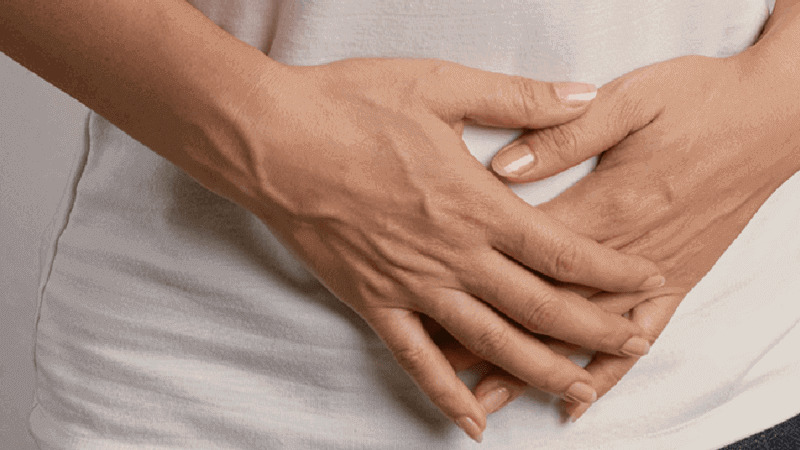The major cause of bladder infection is a bacterial infection within the bladder. It is also called a urinary infection. People suffering from a bladder infection may experience pain, burning when urinating, a frequent need to urinate, and other symptoms. In people with weakened immune systems, yeast can also contribute to urinary bladder infections.
Bacterial infection can cause inflammation of the bladder, and this condition is termed cystitis. Most of the time, bladder problem symptoms are acute and occur suddenly. While other cases may be chronic, which means they occur over the long term. Bladder infection commonly affects females more than males. Early urinary infection treatment is key to preventing the spread of the infection.
Bladder infection V/s urinary tract infections
People sometimes call a bladder infection a urinary tract infection. This infection develops anywhere in the urinary tract, including the kidneys, bladder, ureter and urethra. The upper urinary tract has kidneys and ureters. The kidney’s function is to filter blood to remove toxins and produce urine. While the ureter’s function is to carry the urine to the lower tract. The bladder and urethra are parts of the lower urinary tract. Your bladder functions as a reservoir, which stores urine until you release it. You pass urine out of the body through the urethra. Urinary infections usually occur in the lower tract as it’s easy for the bacteria to enter.
Causes of bladder infection
Bacteria, when they get entry through the urethra and move forwards toward the bladder, can contribute to infection. Typically, the body tries to eliminate the bacteria by flushing them out of the body in urine. Bacteria can sometimes adhere to the wall surrounding the bladder and rapidly multiply. This fails the body’s ability to destroy them, leading to a bladder infection. One of the common causes of bladder infection is Escherichia Coli (E.coli). This bacteria is naturally present in the large intestines. An infection can also cause by bacteria from stool getting on your skin and getting entry through the urethra. In females, the urethra is small, and the outside opening is not far from the anus, allowing easy bacteria entry from stool to the urethra.
Symptoms
Bladder infection causes various symptoms that vary depending on the severity of bladder infection. Some of the most common symptoms of bladder infection are as follows:
-
- Pain or burning when urinating
- Cloudy or bloody urine
- Urinating more than usual, which is called frequency
- A frequent urge to urinate, which is called “urgency.”
- Foul-smelling urine
- Cramp-type pain feeling pressure in your lower abdomen or lower back.
The bladder infections can spread, leading to mid-back pain. This pain is due to an infection in the kidneys. This pain will persist regardless of your posture or activity.
Infection in the kidneys will lead to:
-
- Fever
- Chills
- Nausea
- Vomiting
Kidney infections are more severe than bladder infections and require medical attention. You may develop other symptoms of a urinary infection; consult your doctor for more information. Bladder infection is common to all, but there are different risks for women and men.
Bladder infections in women
Bladder infections are more common in women. There are 40 per cent of women in the USA have developed a urinary tract infection at some point in their life. This is because women have shorter urethra, making the path to the bladder easier for bacteria to reach. A woman’s rectum is located closer to the urethra, causing infections easily. During pregnancy, there is a high risk of bladder infection due to changes in the urinary tract. Changes in the immune system also increase the risk of bladder infections. Blood contraceptives like diaphragms and spermicides may increase your risk of urinary tract infections. Around 25 per cent of women get infected again within six months of their first infection, as they are more prone to recurring infections.
Bladder infections in men
Bladder infections are more common in men more than 65 years of age. However, uncircumcised younger men indulging in anal sex may be at great risk. Several other factors increase the risk of bladder infections for both men and women. They are as follow:
-
- Older age
- Immobility
- Insufficient fluid intake
- A surgical procedure within the urinary tract
- A urinary catheter
- Diabetes
- A weak immunity system
- Bowel incontinence
- Neurodegeneration that affects bladder function, like multiple sclerosis
- Difficulty emptying the bladder, also known as urinary retention.
Diagnosis
Bladder infections can easily be diagnosed by performing a urinalysis. This test deducts white blood cells, red blood cells, nitrites and bacteria in the urine.
Bladder infection treatment
Bladder infection treatment is necessary to eliminate bacterial and associated complications. Antibiotics are prescribed to destroy the bacteria causing the bladder infection, and medications are used to relieve pain, burning, and other symptoms of urinary infection. Moreover, treatment for bladder cancer is different. Consult a health care expert for bladder cancer medications.
Urinary infection medicine – Oral antibiotics are used for urinary bladder problems and to kill bacteria, and doctors prescribe medicines for pain and burning sensations.
Home treatment – along with the medications, there are precautionary steps to take to treat your infection:
-
- Drinking lots of water or other fluids helps flush the bacteria out of your bladder. Water is best for the bladder as its free of caffeine and artificial sweeteners, which are irritants.
- Concentrated cranberry preparations, juices, and extracts may help to prevent infection but should not be used as the sole treatment for an active infection.
- Urinating before and after sexual activity helps in preventing infection.
Also Read: Exploring the Uses and Effects of Alpha Blockers
admin
Latest posts by admin (see all)
- What is Triluma Cream? Uses, Benefits, and How It Works for Skin - December 26, 2024
- What Causes Dark Spots? Understanding the Science of Hyperpigmentation and How Skin Lightening Products Help - December 26, 2024
- Tretinoin Gel vs. Cream: Which Formulation is Right for Your Skin? - December 20, 2024



